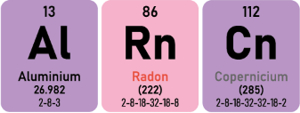Porn Discounts Sex Games Porn Games Juegos XXX Hentai Games PornStar Games 3D Porn Tantaly Sex Doll Cupsland Sextoy Live Cams
Live Sex Free Live Sex Free Sex Games Páginas Porno Rose Toy Free OnlyFans Celebrity Fappening Celebrity Sex Videos TikTok Porn Best OnlyFans
Live Sex Free Live Sex Free Sex Games Páginas Porno Rose Toy Free OnlyFans Celebrity Fappening Celebrity Sex Videos TikTok Porn Best OnlyFans
Published on 2024/06/25
MAINTAINING ORDER AND PROTECTING THE COMMUNITY
The role of the police dates back to ancient times, long before the creation of specialized bodies as we know them today. The function of maintaining order and enforcing rules in a community is an activity that has existed for thousands of years.In ancient China, during the Spring and Autumn period, there were prefects in charge of civil administration and law within their jurisdictions. These prefects and subprefects played roles similar to modern detectives and could be either men or women (Wikipedia). In ancient Babylon, law and order were maintained by officials called paqūdus, who were responsible for investigating minor crimes and making arrests.
In Egypt, around 3000 B.C., there was a primitive police organization. The pharaoh appointed an official responsible for justice and security in each of the 42 jurisdictions of the empire. These officials were assisted by a chief of police known as "sab heri seker" or "chief of the hitters."
The modern concept of police, however, has its roots in the 19th century. In 1829, Sir Robert Peel founded the Metropolitan Police in London, establishing fundamental principles that are still essential for today's police, such as crime prevention and the need to gain public support to be effective.
In the United States, the first professional police force was established in Boston in 1838, followed by New York and other major cities. These bodies were created in response to the growing needs to maintain order in increasingly complex urban societies.
The evolution of the police has been a continuous process, adapting to social and technological changes over the centuries, but its historical roots show a clear continuity in the function of maintaining order and protecting the community.








|
➡️ Let's do real, be real with Tantaly, the sex doll torso leader |



ExtraBall
Give me a hand. Sit here so it doesn't move.
ExtraBall2
(Clicking on these links daily you support ALRNCN's work. They're collaborators or sponsors and, by visiting their sites, they like us even more)










AI IS FINDING YOU A GIRLFRIEND
Matchmakers were women who specialized in arranging marriages, acting as intermediaries between families to find suitable partners. Their role was crucial in many cultures throughout history, especially in societies where arranged marriages prioritized social, economic, and familial compatibility over romantic love.
Across different eras and regions, these women had specific names:
- In medieval and Renaissance Europe, they were known as matchmakers or celestinas, like the character in La Celestina by Fernando de Rojas.
- In China, the "Mei Po" (媒婆) played a key role in arranged marriage traditions.
- In Russia and Eastern Europe, "svakha" were women specialized in finding partners for young people.
- In the Jewish tradition, "shadchanim" were professional matchmakers responsible for arranging marriages within the community.
Now, let’s ask AI to find you a girlfriend—let’s see what it comes up with and if you like any of the options.

# View Images
ExtraBall
Bloopers.
ExtraBall2
(Clicking on these links daily you support ALRNCN's work. They're collaborators or sponsors and, by visiting their sites, they like us even more)










THE NUDES OF COLIN WARD
Colin wasn’t raised to be an artist, but his love for photography started at an early age. As a child, he took photos during family vacations and learned to develop and print images before he even became a teenager. Despite his passion, he pursued a career in engineering and worked as a manufacturing manager for 28 years, keeping photography as his main hobby.
Over time, his dedication to photography grew, and he eventually decided to make it his full-time profession, embracing his true calling.
Although Colin explores all kinds of photography, we’ll focus on his collection of stunning models, which he calls "Figure in the Landscape." His fascination with open spaces makes this series a tribute to the beauty of the human form in natural surroundings.

# View Photos
ExtraBall by david
Social media vs. reality vs. ALRNCN.
ExtraBall2
(Clicking on these links daily you support ALRNCN's work. They're collaborators or sponsors and, by visiting their sites, they like us even more)

























RECOMMENDED SITES
 Add your site
Add your site
- mybigtitsbabes
- Motherless
- BoobieBlog
- Babes & Bitches
- Erotic Beauties
- sweetlicious
- celeb-stalker.com
- Candid Teens
- drunkenstepfather
 Add your site
Add your sitePorn Discount
💩 CrazyShit
🤪 eFukt
NudeChatGirls
👉🍑 Top XXX Pictures
Bingo Porno
Best Porn Blog Sites
Sex Games
Real Amateur Porn
MrPornGeek
CamBB.xxx
ChatSex.xxx
Comepollas
PornScn Free Porno
AI Girlfriend App

















TIK HOT VOL203
TikTok is packed with dances, viral challenges, and slick transitions—but when things get a little too hot, those videos suddenly vanish. At least from the official map.
But there’s a parallel universe where those same girls let loose—with fewer filters, more skin, and zero censorship. Many of these clips still carry the TikTok watermark, but trust me, you won’t find them on the app. They start like any other viral trend… and end up in much steamier territory.
That universe? We named it Tik Hot a while back. And yes, I’ve got a fresh batch ready for you.

# Watch Videos
ExtraBall
Today’s slow-motion highlight.
ExtraBall2
(Clicking on these links daily you support ALRNCN's work. They're collaborators or sponsors and, by visiting their sites, they like us even more)












TOWEL SPECIAL VOL.20
It’s not that she takes off the towel—it’s how she does it. The magic is in the gesture. That slow, effortless motion, like it’s nothing… but knowing exactly what it does to you.
She lets it fall like she’s dropping a time bomb. And you? Frozen on the other side of the screen, not even blinking, afraid you’ll miss the miracle if you look away for a second.
No music, no filters, no fake poses. Just a girl, a towel, and a before and after. Now do you get why we keep making these compilations?
Some things never get old. And this, my friend—this is one of them.

# Watch videos
For Apple users
You might have noticed that when attempting to join our Telegram Channel you get a message that flags our content as sensitive content, which ends up not letting you see anything; this means you have the parental control activated.
This means you have to go to the web version of Telegram https://web.telegram.org and log in, if you are not already. In the settings, in the "Privacy" section, find the option "Sensitive content" and activate "Disable filtiaguapas2703ng". As soon as you do, the Settings will automatically sync with the rest of your devices, including the iOS and macOS versions of the App Store.
From there you will be able to enter all the Adult Channels.
ExtraBall
Pam, just like you always wanted to see her.
ExtraBall2
(Clicking on these links daily you support ALRNCN's work. They're collaborators or sponsors and, by visiting their sites, they like us even more)










Contact
You can tell us whatever you want via email: [email protected]
If you prefer, you can use this contact form:
If you prefer, you can use this contact form:






THE EROTICISM OF GABRIEL DUSIL
His photography captures the essence of the female form in a way that’s both provocative and stunning. Each image highlights not just physical beauty, but the timeless strength and complexity of femininity. Through his portfolio, he aims to strike a perfect balance between vulnerability and sensuality, crafting compositions that stir deep emotions.
Dive into this fascinating world of elegance, seductive poses, and moments that celebrate the essence of womanhood — all seen through the unique lens of his camera.

# View photos
ExtraBall by david
It’s never too late to get into the world of fashion.
ExtraBall2
(Clicking on these links daily you support ALRNCN's work. They're collaborators or sponsors and, by visiting their sites, they like us even more)










PUSHING BUTTS
vikingo
About five months ago, I told you about Coby Persin, also known as The Stretch Master. Since I don’t want to repeat myself, it’s better if you check out what I shared with you that day for some context—justclick here
Here are three new videos that were shared in our Telegram community a while back. They’re worth watching just for how unusual they are. No words needed.

# Watch videos
ExtraBall
Your moment has finally arrived. Show them all you deserve their respect.
ExtraBall2
(Clicking on these links daily you support ALRNCN's work. They're collaborators or sponsors and, by visiting their sites, they like us even more)
































